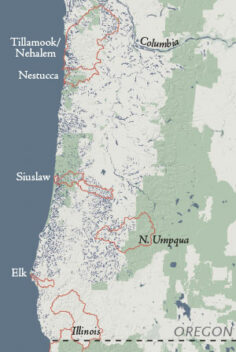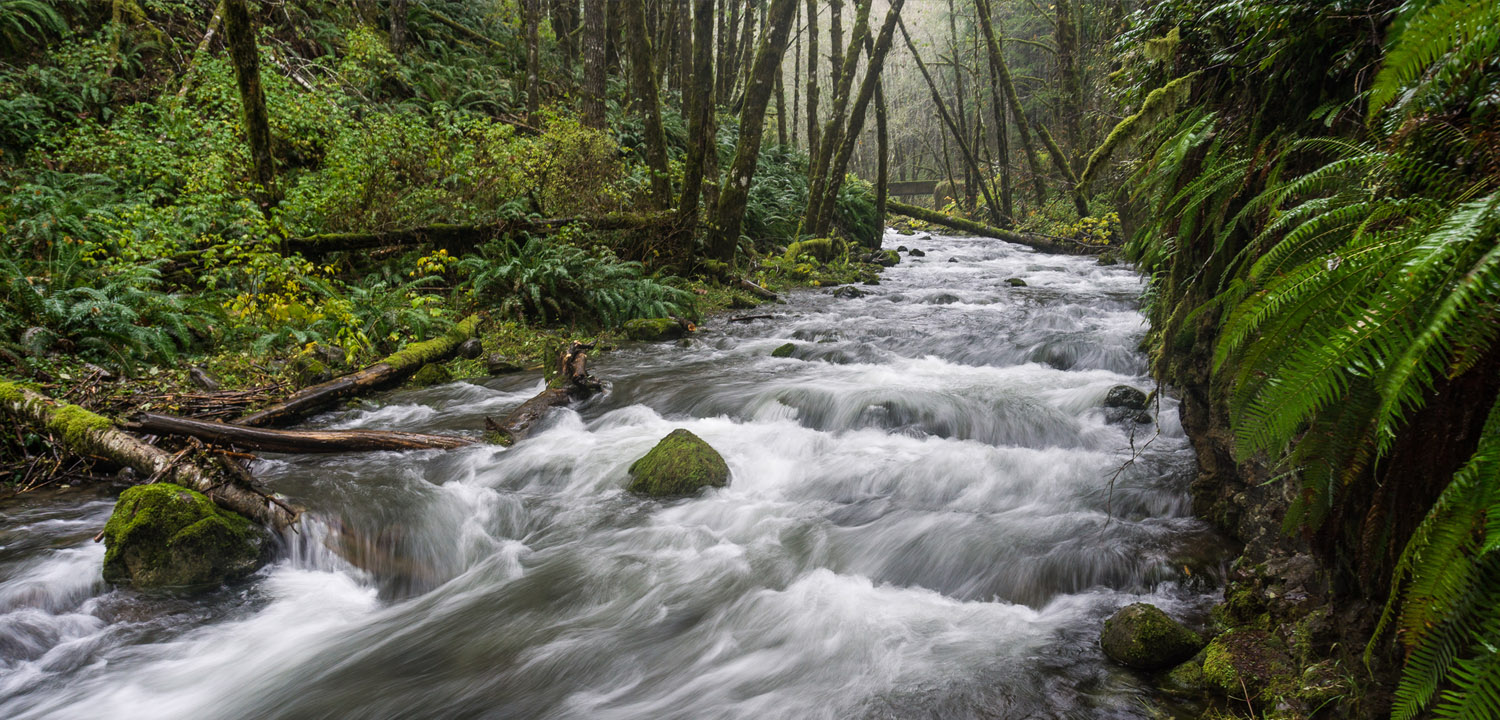Oregon needs to restore its leadership on clean water, for salmon and people.
Despite Oregon’s vaunted green reputation, the state has earned some black marks lately on water management. Thousands of miles of rivers and streams in Oregon are listed as polluted by the Environmental Protection Agency. And after Oregon’s failure to improve forest practices on coastal streams, Oregon became the first state to lose federal grant funding – $1.4 million to be exact – for coastal zone water improvement projects.
In the harsh light of the hot, dry summer of 2015, we saw just how important it is for Oregon to take proactive steps to keep streams clean and cool. The summer was riddled with fishing closures on many of Oregon’s rivers, and massive salmon die-offs on the Columbia.
Oregon needs a coordinated water initiative, and Wild Salmon Center is helping to lead the way. Our main thrust: keep Oregon Coast rivers cool, protect and restore salmon habitat, and help Oregon Coast coho be the first salmon species removed from the Endangered Species List.
We focus on the Oregon Coast because it has one of the best collections of wild salmon habitat in the Lower 48. It’s also well positioned to ride out a shifting climate. Coastal rivers are generally rainfed and aquifer-fed, and won’t be affected by the decline of winter snowpack. Many coastal headwaters are protected in public lands. Few dams block fish passage. The coast has relatively limited impacts from existing hatcheries and a commitment from the state to contain hatchery fish for the benefit of more resilient and adaptable wild populations.
The challenge remains keeping coastal waters clean, flowing, and cold.
We are working with local landowners and watershed groups on the coast to improve water quality.

Amid last summer’s unfavorable water conditions, WSC helped lead a coalition of fishing and conservation groups that pushed to expand forested buffers along streams on private land in Western Oregon. We raised public awareness about strong scientific evidence showing that wider forest buffers would keep streams cool. In November, the Board of Forestry voted to effectively double the buffer width on over 2,500 miles of coastal salmon streams from approximately 30 to 60 feet.
It’s the most significant change in Oregon forest laws in two decades.
There’s far more to be done. We need to accelerate the rate we restore watersheds. We need to repair or retire old logging roads and improve forest laws on landslide prone slopes, to keep sediments from washing into salmon streams.
Wild Salmon Center’s Mark Trenholm is building action plans with local landowners and watershed groups on the coast, to push the state forward on water quality.
We all agree that it’s time to stake out a new legacy for Oregon.
